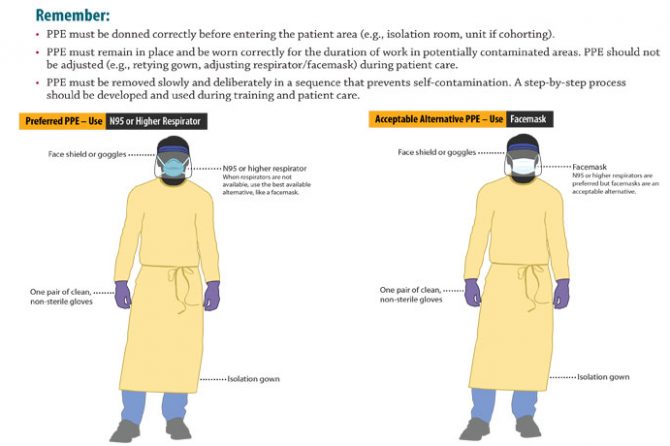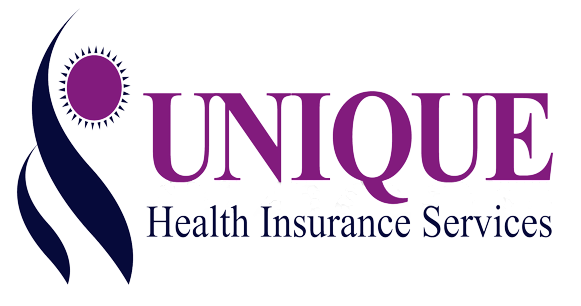
Guidance for Providers Re-Opening Business
We are committed to help you safely re-open your offices amidst the current outbreak of coronavirus disease-2019 (COVID-19). Currently there are no specific medications to treat or vaccines to prevent COVID-19. Therefore, we encourage you to continue practicing Standard Precautions to slow disease transmission and reduce the number of people who get sick. We have provided some resources to safely re-open your offices below:
Standard Precaution for Patient Care
Standard precautions apply to blood, all body fluids, secretions, excretions, non-intact skin, and mucous membranes. The use of common sense practices and personal protective equipment based on risk assessment protects healthcare providers from infection and prevents the spread of infection from patient to patient.
Please review the document attached below.
Standard Precaution for Patient Care
Use Personal Protective Equipment When Caring for Patients with Confirmed or Suspected COVID-19
Before caring for patients with suspected or confirmed cases, healthcare personnel (HCP) must:
- Receive comprehensive training on when and what PPE is necessary, how to don (put on) and doff (take off) PPE, limitations of PPE, and proper care, maintenance, and disposal of PPE.
- Demonstrate competency in performing appropriate infection control practices and procedures.
Donning (putting on the gear):
More than one donning method may be acceptable. Training and practice using your healthcare facility’s procedure is critical. Below is one example of donning.
- Identify and gather the proper PPE to don. Ensure choice of gown size is correct (based on training).
- Perform hand hygiene using hand sanitizer.
- Put on isolation gown. Tie all of the ties on the gown. Assistance may be needed by another HCP.
- Put on NIOSH-approved N95 filtering facepiece respirator or higher (use a facemask if a respirator is not available).
If the respirator has a nosepiece, it should be fitted to the nose with both hands, not bent or tented. Do not pinch the nosepiece with one hand. Respirator/facemask should be extended under chin. Both your mouth and nose should be protected. Do not wear respirator/facemask under your chin or store in scrubs pocket between patients.*
Respirator: Respirator straps should be placed on crown of head (top strap) and base of neck (bottom strap). Perform a user seal check each time you put on the respirator.
Facemask: Mask ties should be secured on crown of head (top tie) and base of neck (bottom tie). If mask has loops, hook them appropriately around your ears.
- Put on face shield or goggles. Face shields provide full face coverage. Goggles also provide excellent protection for eyes, but fogging is common.
- Perform hand hygiene before putting on gloves. Gloves should cover the cuff (wrist) of gown.
- HCP may now enter patient room.
Doffing (taking off the gear):
More than one doffing method may be acceptable. Training and practice using your healthcare facility’s procedure is critical. Below is one example of doffing.
- Remove gloves. Ensure glove removal does not cause additional contamination of hands. Gloves can be removed using more than one technique (e.g., glove-in-glove or bird beak).
- Remove gown. Untie all ties (or unsnap all buttons). Some gown ties can be broken rather than untied. Do so in gentle manner, avoiding a forceful movement. Reach up to the shoulders and carefully pull gown down and away from the body. Rolling the gown down is an acceptable approach. Dispose in trash receptacle.*
- HCP may now exit patient room.
- Perform hand hygiene.
- Remove face shield or goggles. Carefully remove face shield or goggles by grabbing the strap and pulling upwards and away from head. Do not touch the front of face shield or goggles.
- Remove and discard respirator (or facemask if used instead of respirator). Do not touch the front of the respirator or facemask.
Respirator:Remove the bottom strap by touching only the strap and bring it carefully over the head. Grasp the top strap and bring it carefully over the head, and then pull the respirator away from the face without touching the front of the respirator.
Facemask: Carefully untie (or unhook from the ears) and pull away from face without touching the front.
- Perform hand hygiene after removing the respirator/facemask and before putting it on again if your workplace is practicing reuse.
Providers’ Offices Preparedness Assessment Tool
Providers offices should be prepared for the possible arrival of patients with Coronavirus Disease 2019 (COVID-19) and should ensure their staff are
trained, equipped, and capable of practices needed to:
Prevent the spread of respiratory infections, including COVID-19.
Promptly identify and isolate patients with possible COVID-19 and inform the correct staff and public health authorities.
Monitor and manage any healthcare personnel that might be exposed to COVID-19.
The following checklist is not a list of mandatory requirements; rather, it highlights important areas CDC recommends facilities review in preparation for potential arrivals of COVID-19 patients.
Leave a reply